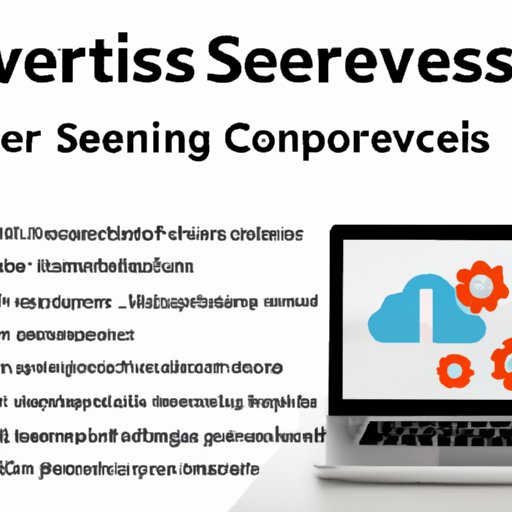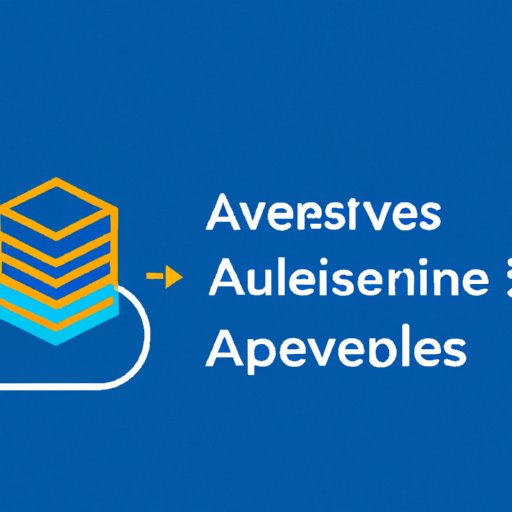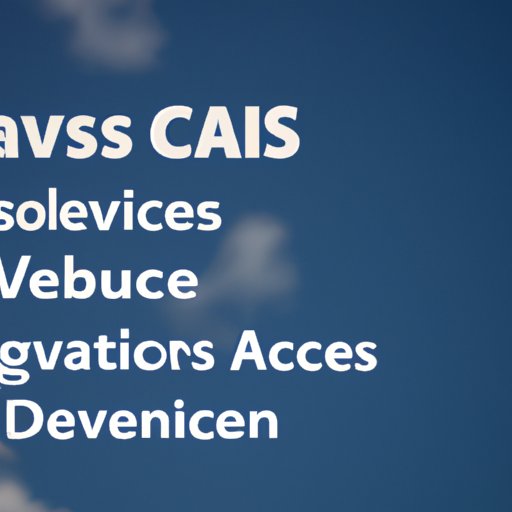Introduction
Serverless architecture is an emerging trend in modern software development that promises to revolutionize the way businesses create, deploy, and manage applications. It’s a cloud-based approach that eliminates the need for physical servers, allowing companies to focus on their core business operations rather than managing infrastructure. In this article, we’ll explore what serverless architecture is, the advantages and challenges it presents, different types of serverless architectures, and best practices for building serverless solutions.

Exploring the Basics of Serverless Architecture
Before diving into the details of serverless architecture, it’s important to understand the basics. So, let’s start by defining what serverless computing is.
What is Serverless Computing?
Serverless computing is a type of cloud computing that allows businesses to run code without having to manage or provision server resources. It’s a pay-as-you-go model that eliminates the need to purchase, configure, and maintain physical servers. Instead, businesses can simply upload their code to the cloud provider and let them handle the rest.
How Does Serverless Computing Work?
Serverless computing works by running code on demand in response to events. When an event occurs, such as a user submitting a form or a file being uploaded, the code is triggered and executed in the cloud. The code runs in a container (a virtual machine) and is managed by the cloud provider. This allows businesses to offload the burden of managing servers and instead focus on building applications.

Advantages of Serverless Computing for Businesses
Businesses are increasingly turning to serverless computing as a way to reduce costs, improve scalability, and increase speed and reliability. Let’s look at each of these benefits in more detail.
Cost Savings
One of the primary advantages of serverless computing is cost savings. With serverless computing, businesses only pay for the resources they use, which can result in significant cost savings over traditional server-based approaches. According to a study by Oracle, businesses can save up to 70% on their cloud costs by using serverless computing.
Scalability
Another advantage of serverless computing is scalability. Since the cloud provider manages the underlying infrastructure, businesses can easily scale up or down depending on their needs. This makes it easier to handle spikes in traffic or unexpected workloads without having to manually manage servers.
Speed and Reliability
Finally, serverless computing is faster and more reliable than traditional server-based approaches. With serverless computing, businesses don’t have to worry about configuring and managing servers, which can lead to faster deployments and more reliable services. Additionally, since the cloud provider manages the underlying infrastructure, businesses can be assured that their services will remain available even during times of high demand.
Different Types of Serverless Architectures
There are several different types of serverless architectures that businesses can choose from, each with its own advantages and disadvantages. Let’s take a look at some of the most popular types of serverless architectures.
Function-as-a-Service (FaaS)
Function-as-a-service (FaaS) is a type of serverless architecture that allows businesses to run code in response to events. It’s a pay-as-you-go model that eliminates the need to manage and provision server resources. Popular services include AWS Lambda, Google Cloud Functions, and Microsoft Azure Functions.
Platform-as-a-Service (PaaS)
Platform-as-a-service (PaaS) is a type of serverless architecture that allows businesses to build and deploy web applications without having to manage and provision server resources. Popular services include Heroku, Google App Engine, and Amazon Elastic Beanstalk.
Backend-as-a-Service (BaaS)
Backend-as-a-service (BaaS) is a type of serverless architecture that provides businesses with a ready-made backend for their mobile applications. Popular services include Firebase, Kinvey, and Parse.

Best Practices for Building Serverless Architectures
Building a successful serverless architecture requires careful planning and consideration. Here are some best practices to help ensure your success:
Understand Your Requirements
The first step in building a successful serverless architecture is to understand your requirements. What do you need your application to do? How often will it be used? What type of data will it need to store? Answering these questions will help you determine the best type of serverless architecture for your needs.
Choose a Cloud Provider
Once you’ve determined your requirements, it’s time to choose a cloud provider. Different cloud providers offer different features and pricing models, so it’s important to do your research before making a decision. Additionally, make sure to read the terms of service carefully to ensure that you’re getting the best deal possible.
Monitor Performance Regularly
Finally, it’s important to monitor the performance of your serverless architecture regularly. Make sure to keep an eye on resource utilization and response times to ensure that your application is performing as expected. Additionally, make sure to review the usage reports provided by your cloud provider to identify any potential issues.
Conclusion
Serverless architecture is an emerging trend in modern software development that offers businesses the ability to reduce costs, improve scalability, and increase speed and reliability. While there are many advantages to serverless computing, there are also some challenges that businesses should be aware of. By understanding the basics of serverless computing, exploring the different types of serverless architectures, and following best practices for building serverless architectures, businesses can leverage the power of serverless computing to their advantage.
(Note: Is this article not meeting your expectations? Do you have knowledge or insights to share? Unlock new opportunities and expand your reach by joining our authors team. Click Registration to join us and share your expertise with our readers.)
